
Atlantic Recording Corporation is an American record label founded in October 1947 by Ahmet Ertegun and Herb Abramson. Over the course of its first two decades, starting from the release of its first recordings in January 1948, Atlantic earned a reputation as one of the most important American labels, specializing in jazz, R&B, and soul by Aretha Franklin, Ray Charles, Wilson Pickett, Sam and Dave, Ruth Brown and Otis Redding. Its position was greatly improved by its distribution deal with Stax. In 1967, Atlantic became a wholly owned subsidiary of Warner Bros.-Seven Arts, now the Warner Music Group, and expanded into rock and pop music with releases by Crosby, Stills, Nash & Young, Led Zeppelin, and Yes.

"What'd I Say" is an American rhythm and blues song by Ray Charles, released in 1959. As a single divided into two parts, it was one of the first soul songs. The composition was improvised one evening late in 1958 when Charles, his orchestra, and backup singers had played their entire set list at a show and still had time left; the response from many audiences was so enthusiastic that Charles announced to his producer that he was going to record it.

The Genius of Ray Charles is a 1959 Ray Charles album, released in October by Atlantic Records, the seventh album since the debut Ray Charles in 1957. The album consists of swinging pop with big band arrangements. It comprises a first half of big band songs and a second half of string-backed ballads. The Genius of Ray Charles sold fewer than 500,000 copies and charted at number 17 on the Billboard 200. "Let the Good Times Roll" and "Don't Let the Sun Catch You Cryin'" were released as singles in 1959.

Oh Yeah is a studio album by the American jazz bassist and composer Charles Mingus, released in April 1962 by Atlantic Records. It was recorded in 1961, and features Mingus singing on three of the cuts and playing piano throughout.
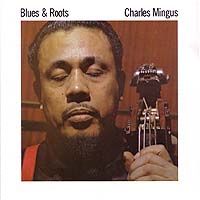
Blues & Roots is an album by Charles Mingus, recorded in 1959 and released on the Atlantic label in 1960. It has been reissued on CD by both Atlantic and Rhino.
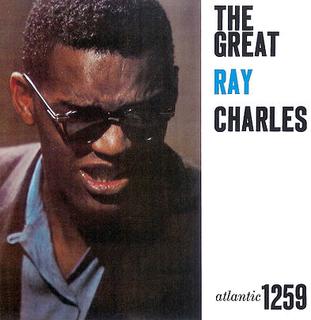
The Great Ray Charles is the second studio album by American musician Ray Charles, released in 1957 by Atlantic Records. An instrumental jazz album, it features cover art designed by Marvin Israel. Later CD re-issues of The Great Ray Charles often include six out of the eight songs from the 1961 album The Genius After Hours, as bonus tracks.

The Best of Mose Allison is a compilation album by Mose Allison. It includes some of the jazz pianist and singer's best-known recordings for Atlantic Records. The album was originally released in 1970 as an LP record with 12 songs. The album was re-issued on a CD in 1988 with an additional eight songs and new sequencing.

Used Songs 1973–1980 is a compilation of songs from Tom Waits's Asylum Records years.

Bags & Trane is an album credited to jazz musicians Milt Jackson and John Coltrane, released in 1961 on Atlantic Records, catalogue SD 1368. Taking its title from Jackson and Coltrane's nicknames, it is the only collaborative record by the two, although only Jackson contributed original compositions. In actuality, the album belongs in Jackson's discography, as he was the session leader and still signed to Atlantic under the auspices of the Modern Jazz Quartet, and not in that of Coltrane, who had left the label for Impulse Records at the time of this album's first issue. However, like Prestige Records, as Coltrane's profile grew after he had stopped recording for the label, Atlantic released them with Coltrane's name more prominently displayed.

To Bonnie from Delaney is the fourth album by Delaney & Bonnie and Friends. It was their first studio album for the Atco/Atlantic label, and their fourth album overall. Coincidentally, Atco/Atlantic's parent company purchased the Bramletts' previous label Elektra Records around this time.
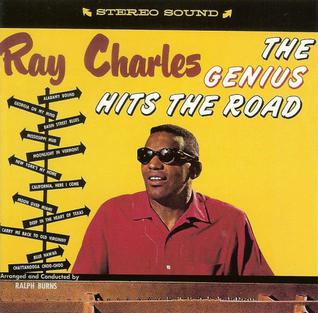
The Genius Hits the Road is a 1960 album by Ray Charles. The concept album focuses on songs written about various parts of the United States. It peaked at number nine on the pop album charts and produced a US #1 single, "Georgia on My Mind".
"Drown in My Own Tears", originally credited as "I'll Drown in My Tears", is a song written by Henry Glover. It is best known in the version released as a single in 1956 by Ray Charles on the Atlantic record label.
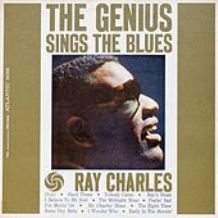
The Genius Sings the Blues is an album by Ray Charles, released in October 1961 on Atlantic Records. The album was his last release for Atlantic, compiling twelve blues songs from various sessions during his tenure for the label. The album showcases Charles's stylistic development with a combination of piano blues, jazz, and southern R&B. The photo for the album cover was taken by renowned photographer Lee Friedlander. The Genius Sings the Blues was reissued in 2003 by Rhino Entertainment with liner notes by Billy Taylor.

The Genius After Hours is an album by American musician Ray Charles, released in 1961. The songs featured on the album were taken from the same three studio sessions that created his 1957 album The Great Ray Charles, which featured the use of both a trio and a septet; the latter was arranged by Quincy Jones. Also appearing on The Genius After Hours is David "Fathead" Newman on tenor and alto saxophone, alongside trumpeter Joseph Bridgewater.

Otis! The Definitive Otis Redding is a 1993 four compact disc compilation album by American soul singer-songwriter Otis Redding. The first three discs focus on studio material recorded for Stax records. These recordings are all original mono single or LP mixes. Three pre-Stax recordings and a demo recorded at Muscle Shoals are also included. The fourth disc, labeled "The Ultimate Live Otis Redding Show" was compiled from various live sources in an attempt to gather "the best version" of every song Otis ever recorded live and is mixed in stereo. The 100-page booklet includes testimonials from musicians and individuals from Redding's life, essays, a photo album, track listings, discographies, personnel and recording information.

Krupa and Rich is a 1956 studio album by jazz drummers Gene Krupa and Buddy Rich, released on Norman Granz' Clef Records. Krupa and Rich play on two different tracks each and play together only on "Bernie's Tune." Krupa and Rich would record again for Verve Records; their album Burnin' Beat was released in 1962.

More Soul is an album by jazz saxophonist Hank Crawford. Atlantic Records released the album in 1961. More Soul is Crawford's first album as a leader, recorded on October 7, 1960 while he was the music director in Ray Charles' group. Charles provided the arrangement for the track "The Story."
James Theodore Powell was an American jazz saxophonist who played alto sax.
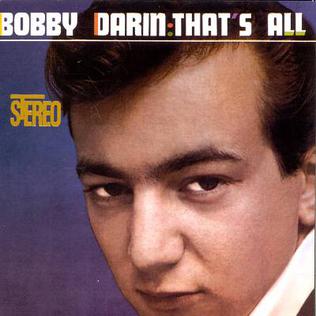
That's All is an album by American singer Bobby Darin released in 1959 and arranged by Richard Wess. It was on the Billboard LP charts for 52 weeks and peaked at number seven. It also includes Darin's US No. 1 hit "Mack the Knife", which spent nine weeks at the top spot, and "Beyond the Sea", which was a Top 10 hit. At the second Grammy Awards, Darin won Record of the Year and Best New Singer.

The Beat Goes On is an album by American jazz flautist Herbie Mann released on the Atlantic label in 1967. The album features tracks from seven separate sessions recorded in 1964, 1966 and 1967.


















